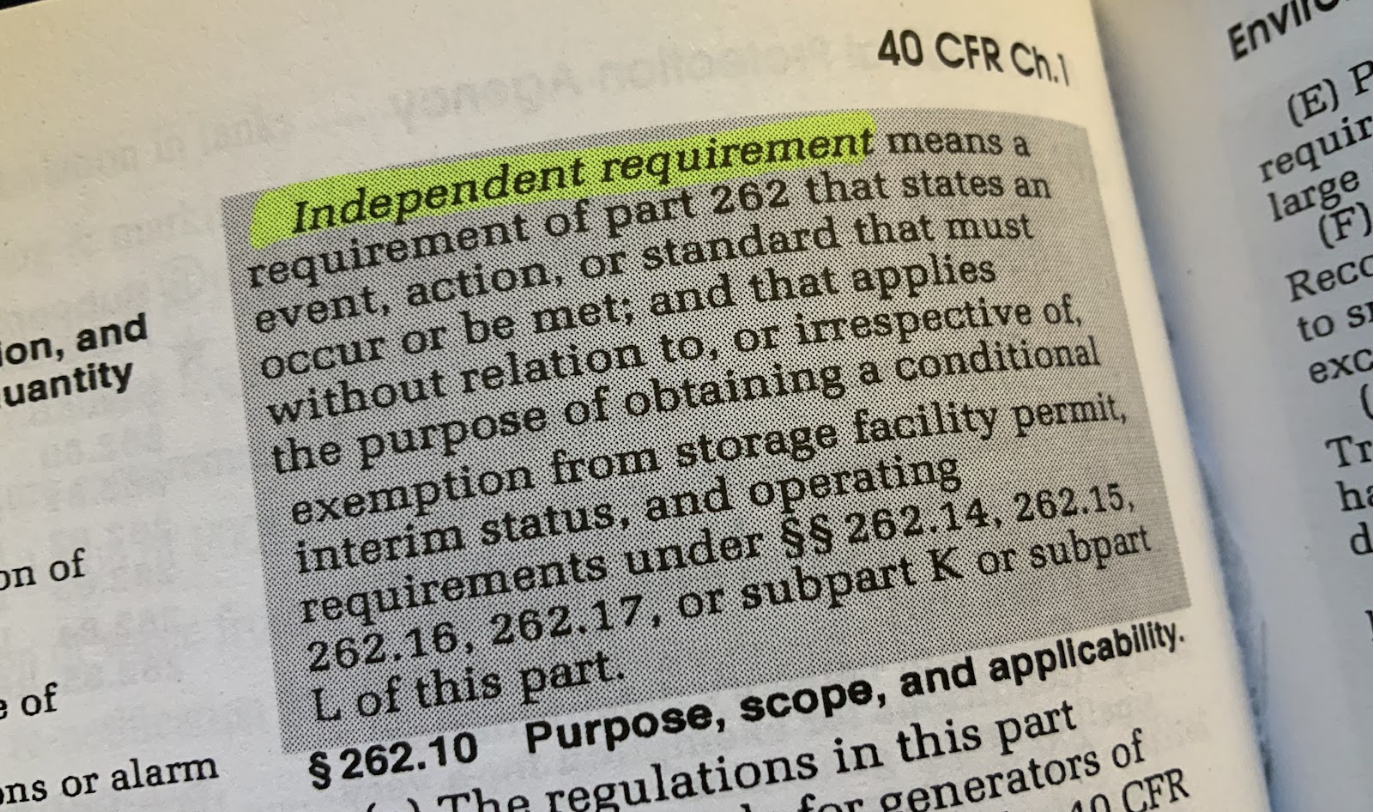In the late 1970’s the United States Congress in the Environmental Conservation and Recovery Act, (RCRA) and the British rock and roll band “The Who” were both asking the same question.
WHO ARE YOU?
As for the band and its raunchy songs, for anyone under 60 years old it’s the band’s music they use in the crime scene investigator TV show “CSI” and its CSI spinoffs. Back in the day, the band’s songwriter Peter Townsend apparently felt like he was being seen as a sellout by the up and coming Punk rock bands like the Sex Pistols and The Clash. Ironically, the opposite was true, as The Who and The Clash toured together in 1983.
Congress was not so profane, at least not in reference to hazardous waste under RCRA. Congress deferred the Treatment Storage and Disposal (TSDF) hazardous waste site permitting requirements to the Environmental Protection Agency (EPA). Overwhelmed by the prospect of issuing hundreds of thousands of TSDF permits, EPA made the decision that if a hazardous waste generator could meet certain conditions, that generator would not be required to designate their facility as a full TSDF.
THE CONDITIONS FOR EXCEPTION
These “conditions for exception” are found in Part 262 of 40 CFR.
The three exceptions are as follows, Very Small Quantity Generators (VSQG) conditions for exception, from TSDF permitting, in 40 CFR 262.14,
Small Quantity Generators (SQG) conditions for exception from TSDF permitting are in 262.16 and the Large Quantity Generators (LQG) conditions for exception from TSDF permitting are in 262.17.
The beauty is, to receive one of these TSDF permitting exceptions is that all you have to do is notify EPA that you are meeting certain requirements or “conditions”. How often? Never, if you are a VSQG, every two years if you are a LQG and every four years if you are a SQG.
Conditions for exception could include getting a site EPA ID Number, marking containers with the words “HAZARDOUS WASTE”, an indication of hazard, the state start time in certain cases and federal on-site 90/180 day hazardous waste storage start times. In addition these conditions include specific training and inspection requirements.
Based on your facility status, your conditions for exception may require preparing a Facility Contingency, Preparedness and Prevention Plan under 40 CFR 262.260 which in turn must be submitted to the Local Emergency Planning Committee, Police departments, Fire departments, Hospitals and any Emergency response teams that might be called upon to provide emergency services.
INDEPENDENT REQUIREMENTS
These exceptions do not come without regulations, which can be found in 262.10 Independent requirements”. Independent requirements are regulations that must be met by everyone. That is why they are referred to as independent requirements, they must be met independent of whether you are excepted from getting a TSDF permit or not.
The three most important Independent requirements are; Hazardous waste determination in 262.11(a), that means tracking solid waste for hazardous waste, then Hazardous waste determination recordkeeping in 262.11(f), recording the information that was used for your hazardous waste determination. Finally, completing the Generator category determination in 262.13, to determine generator status.
That is not the end of it, independent of whether you decided to take one of the exceptions or not, large and small quantity generators must always ship their hazardous waste on the EPA hazardous waste manifests, under the 49 CFR Department of Transportation (DOT) Hazardous Material Regulations and meet EPA semi-annual reporting requirements, as these are all independent requirements.
The biggest difference between independent requirements and “conditions for exception ” occurs during the enforcement process. That is that if you fail to meet an “independent requirement” your company would be cited for that one violation.
However, if you fail to meet just one of the conditions for exception , let’s say forgetting to mark the start date on a container of hazardous waste in the Central Accumulation Area (CAA), EPA could cite your facility for illegally storing hazardous waste without a TSDF permit. The small and large quantity independent regulations come with their own unique requirements, so the first question to ask yourself is, “Who Are You?”
Order your New 2022/2023 Hazardous, Materials, Substances and Wastes Compliance Guide and get your people signed up for a seminar. Reserve now!
Thank you!
Robert J. Keegan
Publisher and President
Hazardous Materials Publishing Company
Transportation Skills Programs Inc.
610-683-6721



